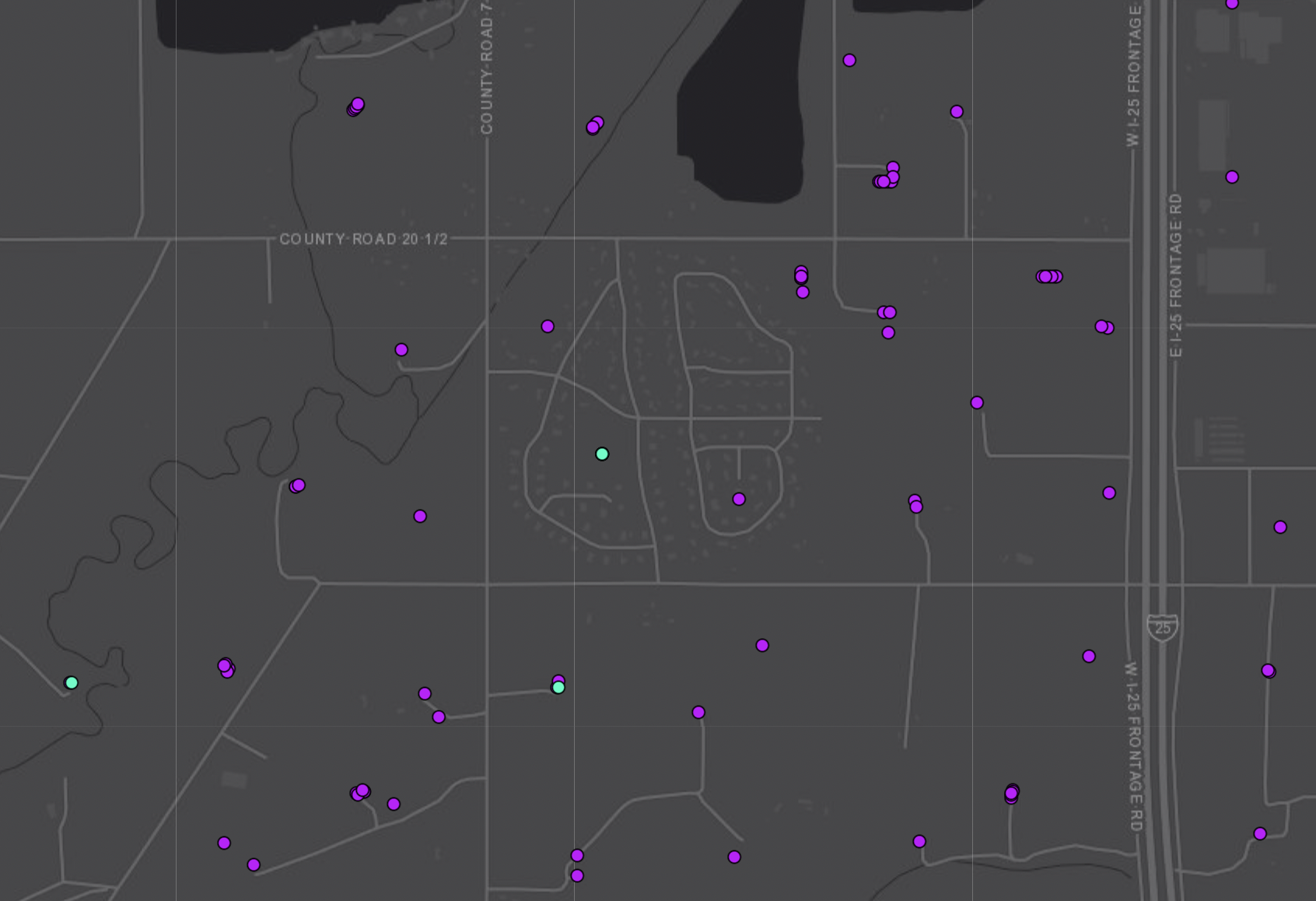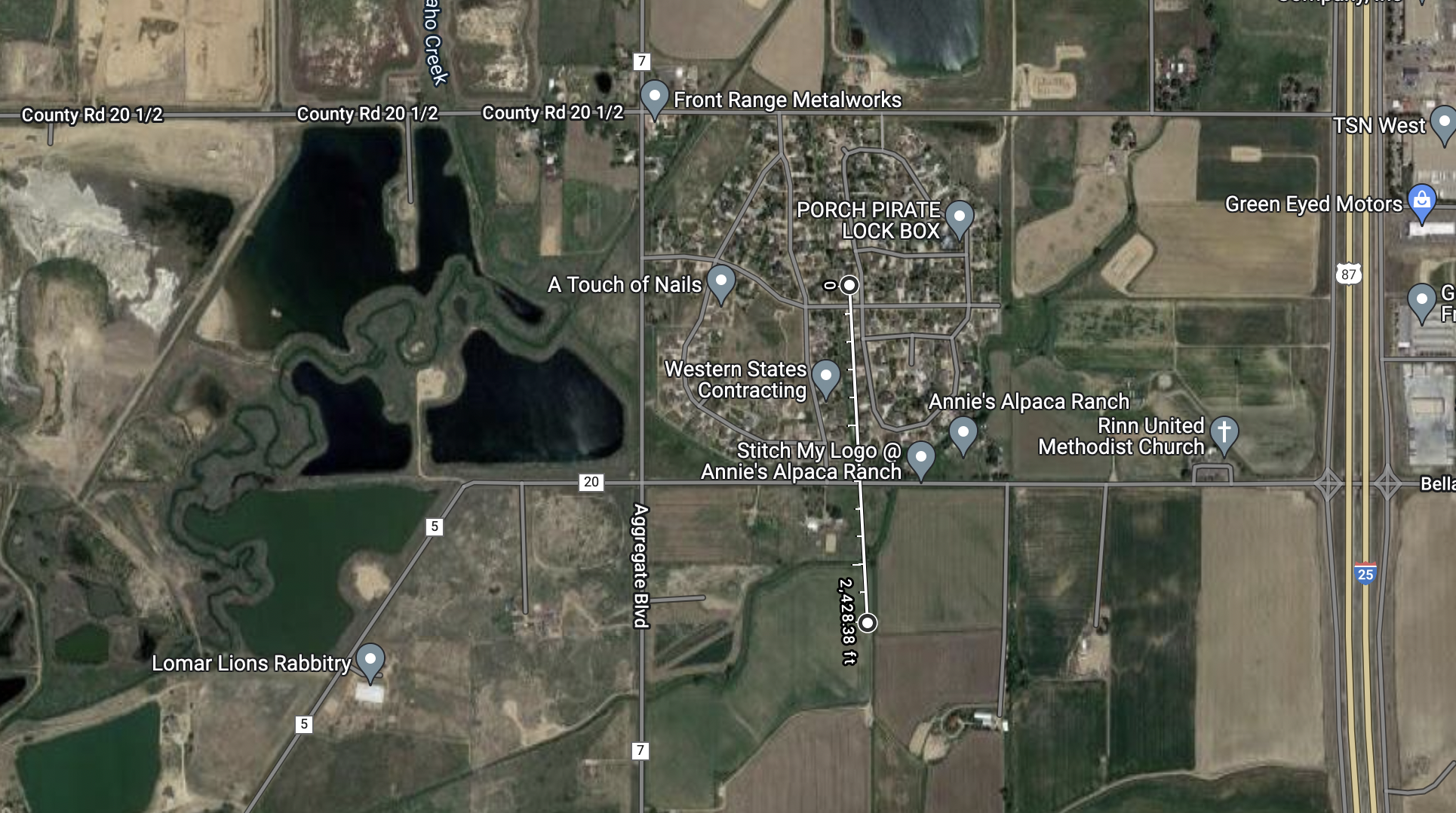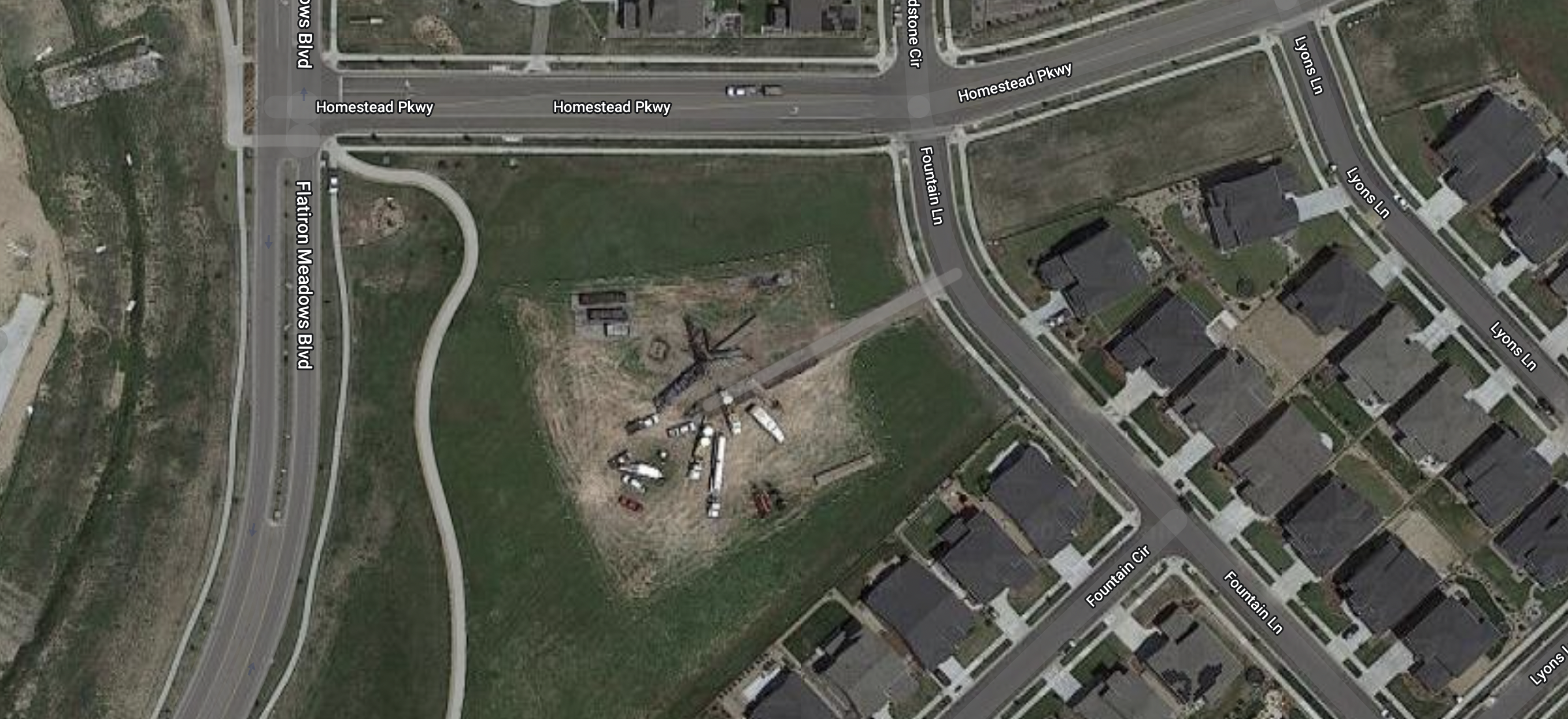Oil and Gas
I told every realtor I interviewed I would be looking in Erie and Longmont, which both had a good stock of homes I was interested in. One said “oh, if you’re looking in Weld County, you need to think about oil and gas”.
“Yes, my understanding is there’s a big political difference between Boulder and Weld Counties.”
“There is, but it’s really the drilling that’s problematic.”
“I know it has some serious environmental concerns.”
“Yeah, and just – it’s something you should know about.”
OK, OK, I thought. It’s a political divide for sure, but I’ve never been one for discussing politics with neighbors (or anyone) anyway, so why should I care on which side I live? It’s not as though one side of the county line is better or worse.
Those who do own a home out in Weld County are laughing at me now, because I hadn’t realized the oil and gas issue had nothing to do with politics between neighbors, but rather the interface between industrial and residential land usage. You see, in much of Colorado, homeowners own the surface and structure but not the subsurface or minerals: namely, oil. A full 81% of all crude oil produced in Colorado comes from Weld County alone, and Colorado is a top-five producer of crude in the US. In Weld, oil is the big business.
In Boulder County, however, whose politics are dominated by the ultra-blue Boulder and Longmont cities, oil is barely an industry at all.

That strong vertical bar near the center of the image is E County Line Road, which divides Boulder County to the west from Weld to the east. Each purple dot is a well – whereas they’re sparse in Boulder, they’re laid out in a dense grid in Weld.
For a dicussion of why this is bad that has nothing to do with politics or the environment, let’s use a neighborhood just east of Longmont as an example.

This neighborhood has many large homes on large lots and they were typically priced from $0.9M - $1.1M in the start of 2022. It’s also among a cluster of wells (again, each purple dot is a well).

Also, some of what looks like one well is actually several placed right next to each other.

These distances are also not terrifically large; in this neighborhood, all houses are <2500 feet from at least one well and most are <1000 feet from multiple!

Is that so bad? We all know oil wells as the quaint bobbing black metal pumps of old movies and highway drives. Well, it turns out that’s just 99% of their existence. Let’s examine the well known as WILLIAM H PELTIER 2 with Facility / API ID 05-123-12614 in Erie, CO. To examine this well’s life, we’ll:
- Navigate over to roughly Erie Pkwy and Highlands Blvd in Erie in the fracking map.
- Quickly check the current status of the well – in this case, “plugged and abandoned” (“PA”). In the linked definitions, note the difference between a well, wellbore, formation.
- Click the purple dot for the well just west of there.
- Copy the second and third sections of the API Number, in this case
123and12614. - Visit the Facility Search page at COGCC (Colorado’s oil and gas commission) and enter
123for the County Code and12614as the Sequence Code. - Click the linked result to open the status page for the WILLIAM H PELTIER 2 well.
- Click the small link for “Doc” and make sure to sort by Date.
- Scroll through looking for titles such as “well completion report” and “application for permit” clustered in particular years.
By so doing, we learn that this one little purple dot was originally drilled in 1986, then again in 1993, then in 1998, then finally (as part of closing the well) in 2019. These documents paint a picture of an oil and gas company showing up every 10 years for a few months at a time to ruin your enjoyment of the home.

This is a satellite image of a well being drilled less than 250 feet from houses – there are trucks, lights, and towers. The WILLIAM H PELTIER 2 well was drilled around 500 feet from houses. In Colorado, the drilling can be up to 75 dB at night measured 350 feet away; most sources compare that to being next to busy highway traffic, next to a vacuum cleaner, or inside a loud bar. This is anything but quiet.
Furthermore, drilling uses industrial lights that can shine into your bedroom and emits the smell of chemicals used to fill and plug the well that are severe enough to cause headaches for a large number of nearby residents.
Want to live next to that? I don’t.
But, OK, the WILLIAM H PELTIER well was in operation from 1986 to 2019 and underwent 4 operations that each took a few months. Call it a two-month nightmare of noise, light, smell, and headaches per well per decade. That doesn’t sound so bad, does it?
Well, let’s go back to that neighborhood above. One home for sale I examined in early 2022 had 17 active wells within a half mile – at one awful month per decide per well, you’re looking at 1.7 months of annoyance per year, or almost a sixth of your time in the house dealing with active drilling close enough to hear, see, and smell. These wells can absolutely add up fast, and a well that has been quietly producing for 10 years can rapidly turn into a nightmare in your backyard.
In one satellite image above, the edge of the well-drilling area is just 85 feet from the back porch of a nearby home.
Based on my research, you can gamble a well that’s abandoned – whether “abandoned location”, “plugged and abandoned”, “dry and abandoned”, etc. – will be quiet for the rest of your life. But the “producing” or similar wells seem to be a nightmare waiting to happen right in your backyard.
That’s one big reason I ended up in Longmont rather than Erie, and Boulder County rather than Weld County. I wanted my comfortable home protected by the noise, light, and air pollution of active drilling.
The only hilarious thing about this whole story is the number of articles or quotes I read online about tech workers buying homes in Erie sight-unseen from the Bay Area and then realizing oil and gas would be a concern. All money, no sense.